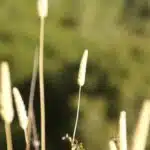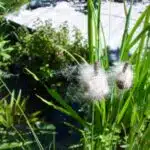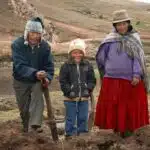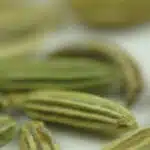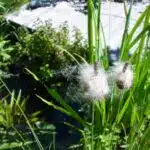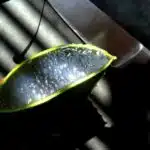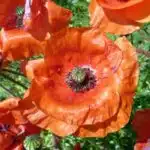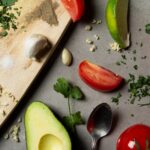Growing chia seeds may seem like a daunting task, but with the right knowledge and resources, it can be surprisingly easy. Chia is a superfood that has been around for centuries, used by ancient cultures as an energy source. Yet today they are still revered for their nutrition and health benefits. With the right tools and information, anyone can learn how to grow chia seeds and reap their nutritional rewards.
The power of chia lies in its ability to sprout quickly, allowing it to be harvested within weeks of planting. With the right preparation, you can have a thriving crop of chia in no time at all. In this article we’ll discuss how to select the appropriate soil, prepare your plants for optimal growth and create a balanced environment for them to thrive in.
At its core, growing chia is about being mindful of your environment and having patience with the process. It’s an opportunity to give back to nature while also nourishing yourself with the fruits of your labor. By taking a few simple steps you can turn your home into a healthy oasis filled with nutrient-rich chia plants. Read on to learn all about how to grow chia seeds!
What Are Chia Seeds?
Many people might not be aware of Chia Seeds and their potential to add nutrition to their diet. However, these tiny seeds are packed full of vitamins, minerals, and other nutrients that can help support a healthy lifestyle. Chia Seeds have been used by many cultures for centuries, but what exactly are they?
Chia Seeds are part of the mint family and come from Central and South America. They’re small, but they’re mighty – each seed contains a great deal of protein, omega-3 fatty acids, iron, calcium, magnesium, zinc and much more. On top of that, chia seeds are also incredibly easy to grow!
No matter your experience level with gardening or growing plants, you can easily start growing chia seeds in almost any container or location. All it takes is some soil and water – you don’t need expensive equipment or chemicals to get started. Plus, chia seeds don’t require too much attention once they begin sprouting; this makes them a great choice for busy folks who don’t have time for regular maintenance. Growing them at home provides an abundance of health benefits that would otherwise be difficult to obtain from store-bought options – so why not give it a go?
Benefits Of Growing Chia Seeds
Growing your own chia seeds can be a great way to gain access to the many benefits they offer. Chia is an ancient superfood, packed with nutrients and goodness. It’s an excellent source of fiber, protein, omega-3 fatty acids, antioxidants, and calcium. Plus, it tastes great!
The process of growing your own chia seeds is simple and straightforward. When you grow them yourself, you know exactly what is in them and where they come from. You also get to enjoy the satisfaction of harvesting your own crop! Plus, you get to take advantage of their long shelf life – up to three years when stored properly in a cool dry place.
When it comes to growing chia seeds at home, there are few things more important than choosing the right soil for your crop. The right soil will ensure that your seedlings have the best chance of thriving and producing a healthy harvest.
Choosing The Right Soil
When it comes to growing chia seeds, choosing the right soil is key. Here’s what you need to consider:
- Texture: The soil should be light and fluffy for optimal root growth.
- Fertility: Chia prefers nutrient-rich soil, so a slow-release fertilizer or compost will help your plants thrive.
- pH level: Chia prefers a slightly acidic soil with a pH of 6.5-7.5.
- Drainage: Good drainage is essential for preventing root rot and other diseases in chia plants, so make sure the soil drains well or add some sand or perlite to improve drainage if needed.
Once you’ve established the right kind of soil for your chia plants, you can start planting them! Preparing the seeds before planting is also important; they should be soaked overnight in water to help them germinate faster and more consistently when planted in the ground. After prepping and planting your seeds, all that’s left to do is wait for them to grow! With proper care, your chia plants should begin producing leaves and flowers within a few weeks of being planted.
Planting Chia Seeds
Planting chia seeds is like planting any other seeds – it’s a simple process! But it’s important to do the job right. After all, if you don’t sow your chia seeds properly, you won’t get the lush results you want. Here’s how to plant them with ease:
First off, let’s start with the basics: sowing your chia seeds. To do this, you’ll need three things: soil, seeds, and containers. It’s best to use a well-draining soil that can absorb moisture easily; otherwise, your chia plants will suffer from root rot. Next up are the seeds – these need to be scattered lightly on top of the soil. Once they’re placed in their containers, give ’em a little sprinkle of water and voila – you’ve planted your chia seeds!
Now that you’ve got your chia seedlings in place, it’s time for some TLC (tender loving care). Here are three key things to keep in mind when caring for your new plants:
Water regularly and judiciously. Chia plants need regular watering but not too much – too much water can cause root rot.
Keep an eye out for pests or diseases. While chia plants are pretty resilient when it comes to disease, they can still be affected by pests like aphids or fungus gnats.
Give them plenty of air flow and light exposure. Chia plants thrive in bright environments with plenty of circulating air – so make sure they get plenty of both!
By following these tips, your chia plants will flourish – so go ahead and enjoy those beautiful green leaves! With proper care and attention, you’ll have beautiful chia flowers before you know it – no green thumb required! Now that we’ve tackled planting our chia seeds, let’s move onto the next step: watering requirements…
Watering Requirements
Watering your chia seeds is an essential part of the growth process. Too much water can cause the seeds to rot, resulting in no growth at all. On the other hand, too little water can stunt their growth and prevent them from sprouting. It’s a delicate balance that must be attained for successful chia seed sprouting.
The best way to ensure your chia seeds are watered properly is to keep the soil moist but not soggy. You can do this by lightly spraying the soil with water once or twice a day. Don’t forget to check for signs of overwatering and adjust your watering schedule accordingly. If you notice any standing water or overly wet soil, reduce the amount of water you are using until it dries out a bit.
To maximize your chances of success, it’s important to monitor the moisture level in your soil and adjust your watering schedule accordingly. This will help ensure that your chia seeds have enough hydration while avoiding any issues caused by overwatering or underwatering them. With proper care and attention, you’ll soon be able to enjoy the fruits of your labor! Now let’s move on to discussing exposure to sunlight for optimal chia seed growth.
Exposure To Sunlight
Like the sun’s rays, the key to success in growing chia seeds is exposure to sunlight. With its warm yellow light, the sun serves as a catalyst for growth, allowing chia seeds to blossom into life. However, like any plant, chia requires careful moderation when it comes to sunlight – too much can be damaging and lead to stunted growth.
When it comes to time spent in the sun, chia plants require around 6-8 hours of direct sunlight each day for optimal growth. When planted outdoors, this amount of direct sunlight is relatively easy to provide – simply place the seedling in a sunny area of your garden or yard and let nature take care of itself. If you are planting indoors, however, you will need to rely on artificial light such as grow lamps. It is important that you get the right kind of light spectrum – Full Spectrum LED Grow Lights are recommended for optimal results.
When planting indoors or outdoors, ensure that your seedlings have access to sufficient air circulation and ventilation – humidity can cause dampness and even rot if not managed effectively. Pruning regularly can also help keep your plants healthy and thriving – keeping them at their optimal size helps them better absorb light from the environment.
By following these simple steps and providing your chia seedlings with just the right amount of sunlight every day, you can give them the best chance at success! With adequate amounts of sunlight and proper care, these tiny seeds have immense potential for growth and development – creating a beautiful crop that will serve as an excellent source of nutrition all year round.
Fertilizer Considerations
To fully realize a successful chia seed harvest, fertilizer considerations should not be overlooked. As the old adage goes, “you get out what you put in”. And for this reason, it is important to provide ample amounts of fertilizer to ensure that the chia plants have all the necessary nutrients to bear fruit.
When fertilizing chia plants, it is generally recommended that a balanced fertilizer with a ratio of 10-10-10 or 20-20-20 be used. This type of fertilizer will help provide an even amount of nitrogen, phosphorus, and potassium (NPK) which are essential for healthy plant growth. It is also important to avoid overfertilizing as this can cause excessive leaf growth and reduce the overall yield of your chia seeds.
If you opt for organic fertilizer such as compost or manure, make sure you use one that has aged thoroughly before application. This will prevent any potential damage from high levels of nitrogen found in fresh organic material. Additionally, if you are using liquid fertilizer, make sure to dilute it according to instructions prior to application so as not to burn your plants.
TIP: If your soil is lacking in nutrition due to infrequent crop rotation or other factors, consider applying a slow release fertilizer throughout the growing season for optimal results. This will help ensure your chia plants receive the right amount of nourishment without having to worry about overfertilization issues.
Controlling Weeds And Pests
Weeding and pest control can be a tedious process when it comes to growing chia seeds. But, if you want a successful harvest, it’s worth the effort. Here are some tips to keep in mind while controlling weeds and pests:
Understand the environment that your chia seeds are planted in. Knowing what kind of soil and climate you’re dealing with will help you come up with a plan to limit weed growth and prevent pests from coming into your garden.
A great way to reduce weed growth is to mulch or cover the bed with something like straw or plastic sheeting. This will act as a barrier between the soil and weeds, while also helping retain moisture for your plants.
If you do spot any pests in your garden, take action quickly. There are various organic sprays available that can help repel them without hurting the environment or other beneficial insects in your garden.
Overall, being mindful of your surroundings and taking preventive measures can go a long way in preventing weeds and pests from ruining your chia seed crop. With some planning and care, you can have a successful harvest of nutrient-rich chia seeds! Looking ahead, it’s important to understand when the right time is for harvesting these seeds for maximum benefits.
When To Harvest Chia Seeds
Perfectly preparing for the pick of your precious chia seeds requires a thoughtful timeline. Taking time to understand when to harvest chia seeds is necessary for nature-based nourishment. Alliteration aside, allow us to assist in assessing the appropriate apogee for your chia crop.
Typically, it takes around 10 weeks from planting until harvest time for chia seeds. The plants should have blossomed with beautiful blue or purple flowers and begun to dry out before harvesting. It’s important to check the seed pods regularly; once they turn brown and open, indicating that the seeds are mature, cut off the stems and place them in paper bags or hang them upside down in a cool, dry location away from direct sunlight to let any remaining moisture evaporate.
With proper patience and preparation comes potential payoffs – plump and potent chia seeds! This can be an especially exciting moment for those who’ve invested many months into their garden growth. When you’re confident that your crop is ready for reaping, grab your gardening gloves and start picking – it’s time to reap what you’ve sown!
Proper Storage Of Chia Seeds
When it comes to storing chia seeds, proper care is key. It’s like a game of Jenga: if one piece is out of place, the entire tower will fail. To illustrate this point, consider the story of my neighbor, who stored her chia seeds in an unlabeled plastic baggie. After months of improper storage, the seeds had completely dried out and she was unable to use them for any recipes.
Properly storing your chia seeds can help ensure they remain viable for months or even years at a time. Start by transferring them into an airtight container such as a glass jar with a lid or a resealable plastic bag. This will help keep moisture and other contaminants away from the seeds while protecting them from any sudden temperature changes. It’s also important to label the container with the date that you purchased the seeds so you know how fresh they are when you’re ready to use them.
Finally, store your chia seeds in cool and dry conditions – preferably between 40-50°F (4-10°C). This will help prevent mold growth and keep them from spoiling prematurely. With these simple steps, you’ll be able to enjoy fresh chia seeds for months or even years without having to worry about poor storage conditions impacting their quality.
Common Problems With Chia Seeds
As the old adage goes, ‘Where there’s a will, there’s a way’. Growing chia seeds can be rewarding and fun, but it is important to understand the potential difficulties that come along with it. This section focuses on common problems with chia seeds and how to troubleshoot them.
First and foremost, you’ll want to make sure that your chia plants have enough water. Even though chia seeds are known for their drought-resistance in nature, they don’t always do well in dry environments. If the soil surrounding your plants is dry to the touch, then you should give them a good watering right away. Additionally, if you live in an area where temperatures are very hot, you may need to water them more frequently or even provide shade during the hottest parts of the day.
Another issue that could arise when growing chia is pests. Whether it’s birds eating your seeds or aphids attacking your leaves and stems, these pests can quickly become a nuisance if left unchecked. If this happens, try using natural methods such as insecticidal soap or companion planting to get rid of them safely without harming your plants. Additionally, it’s important to practice proper hygiene when handling your chia plants so you don’t accidentally spread any diseases or infestations from one plant to another.
Troubleshooting these issues isn’t always easy but with some patience and dedication it can be done! With some knowledge of what causes problems with chia plants and how to combat them effectively, you can go a long way in ensuring success when planting and nurturing these amazing little seeds!
Troubleshooting Chia Seed Problems
Growing chia seeds can be a fun and rewarding experience. The tiny little seeds sprout up in only a few days, and with the right environment, their soft green shoots will soon appear. As rewarding as it can be, there are some problems that can arise during the process. That’s why it’s important to understand how to troubleshoot chia seed problems.
Troubleshooting chia seed problems requires knowledge and careful observation. To keep them healthy, make sure you provide your chia plants with plenty of light, water them evenly and frequently, and provide the right temperature for growth. If the leaves on your plants start to yellow or wilt, that could be an indication of root rot or too much fertilizer. If you see any of these signs, immediately remove the affected plant from its container and check its roots for signs of infection or damage from over-fertilization.
If the problem persists even after removing the infected plant, check for other issues such as incorrect soil type or drainage problems. Adjusting these factors may help resolve any issues you may be facing with growing chia seeds successfully. With careful monitoring and attention to detail, you’ll soon have a thriving garden of lush green chia plants!
The next step is learning how to use your harvested chia seeds in your favorite recipes. Whether you’re using them in smoothies or baked goods, they are sure to add a unique texture and flavor that will impress your friends!
How To Use Chia Seeds
Time to get creative! If you’ve successfully grown your chia seeds, you’re probably wondering what to do next. The truth is, there are so many ways you can use chia seeds to add a powerful punch of nutrition and flavor to your dishes. From salads to smoothies, these ancient Aztec superfoods will take your meals from mundane to marvelous.
For starters, why not try sprinkling some chia seeds over a salad? Not only will they add a crunchy texture and nutty flavor, but the tiny black-and-white specks also pack a nutritional punch. Chia seeds are rich in omega-3 fatty acids, dietary fiber, calcium, manganese, magnesium and phosphorus – all essential for maintaining good health. Plus, they’ll help keep you full longer due to their great balance of protein and fiber.
Next up on the list: Smoothies! Chia gel is an easy way to make any smoothie healthier without compromising taste. All you need is one tablespoon of chia seeds mixed with three tablespoons of water – let it sit for 15 minutes until it’s thickened into a gel-like consistency then just mix it in with your favorite smoothie ingredients. Not only will this add extra nutrition, but it’ll also give your smoothie a creamy texture that’s sure to satisfy even the pickiest palate!
Now that we’ve explored some creative ways to use chia seeds in our meals – let’s move on to the tips for growing them so we can keep enjoying them again and again.
Tips For Growing Chia Seeds
Did you know that chia seeds are a powerhouse of nutrition, packing four times the amount of calcium as milk, five times the amount of iron as spinach and twice the amount of protein as any other seed? Growing these amazing little gems is easy with just a few tips.
Firstly, make sure to start your chia seeds in soil that is loose, well-draining and nutrient-rich. Soak them overnight before planting to give them the best start. Place them about one inch apart in rows and lightly cover with soil. Keep them moist but not soggy by misting or watering daily. Ensure your seeds get plenty of light for at least six hours each day for optimal growth.
Next, it’s important to provide enough space for your chia plants to grow. Thin out your rows after germination so that there is about six inches between each plant. Provide support such as stakes or trellises if needed for taller varieties so they don’t flop over from the weight of their sprouts. Fertilize regularly when flowers appear to ensure healthy growth.
Harvesting can be done when your plants have matured and formed white or blue flowers, usually around 60 days after planting. Cut off entire stems at the base and hang upside down in a cool dry place until the chia pods are dry and brown in color. With these tips you can easily grow your own chia seeds!
Troubleshooting Tips For Harvesting Chia Seeds
Growing chia is a rewarding experience, but it can get tricky when it comes time to harvest the seeds. Fortunately, there are some tips that can help ensure success.
First off, when collecting the seeds make sure you have a container handy. This way you can avoid any mess and easily store the harvested bounty. Next, be aware of the right time to pick your chia seeds. If you wait too long after they’ve ripened to harvest them, they may not be viable anymore. If they aren’t dried out enough, they won’t store well either!
Finally, take care not to let any of the seeds fall onto the ground while harvesting. Chia is renowned for its ability to spread quickly and easily via seed dispersal – which means if one escapes during harvesting it will likely start growing in your garden or somewhere else nearby! So make sure to keep a close eye on your prize catch!
Harvesting chia seeds can be tricky but with these troubleshooting tips you’ll be able to get it done with ease and enjoy the rewards of your hard work.
Frequently Asked Questions
How Long Do Chia Seeds Take To Germinate?
Growing chia seeds is a rewarding and fun activity that can bring you the satisfaction of harvesting them for use in teas, smoothies, or as a topping on your favorite meal. But before you can reap the rewards of these delicious seeds, you must first understand how long it takes for them to germinate.
Understanding this step in the process is key to successful germination and optimal growth. Generally speaking, chia seeds tend to germinate within 1-2 weeks of planting. This timeframe may vary depending on soil temperature, humidity levels, sunlight exposure, and other factors.
To ensure that your chia seed sprouts will grow quickly and healthily, it’s important to pay attention to their environment. Make sure the soil is warm enough and that there’s plenty of water available for them to absorb over time. Additionally, try to give your chia plants some direct sunlight each day if possible; this will help stimulate growth and ensure healthy development. With proper care and a little patience, your efforts will be rewarded with tasty treats!
Are Chia Seeds Hard To Grow?
Growing chia seeds is like planting a seed of hope in the garden of life. It takes time and nurturing to see the results, but when you do, it feels like a reward for all the hard work and dedication. But how difficult is it to grow chia seeds?
The good news is, growing chia seeds isn’t as daunting as it may seem! With just a few simple steps and some patience, you can have your own little harvest of chia sprouts and enjoy their many health benefits. All you need is light soil and water, and you’ll be well on your way to sprouting success.
However, it’s important to note that although chia seeds are relatively easy to grow, they do take some time before they are ready to eat. The germination period usually lasts between 5-10 days, depending on the conditions they’re grown in. Once the sprouts reach about 1/2 inch long, they should be ready for harvest – so try not to get discouraged if the process takes longer than expected! With proper care and attention, these tiny miracle workers will be happily growing in no time.
What Is The Best Temperature For Growing Chia Seeds?
Growing chia seeds may seem like a daunting task, but with the right temperature conditions, it can be incredibly simple! Imagine a world in which you can grow chia seeds with no effort – and all it takes is the right temperature. You’ll be amazed at how easy it is to make this happen.
The best temperature range for growing chia seeds is between 70°F and 85°F. If the temperature drops too low, your seeds won’t germinate; if it gets too high, they’ll dry out and die. Therefore, finding the perfect balance of warmth and humidity is essential for successful growth.
Monitoring your temperature levels is critical when growing chia seeds as even small shifts in temperature can have an impact on their success. To ensure ideal conditions for your plants, consider investing in a digital thermometer or hygrometer that can help you accurately measure temperatures and humidity levels. With these helpful tools in hand, achieving the optimal environment for your chia seeds will be simpler than ever before!
So don’t let growing chia seeds intimidate you – all it takes to get started is finding the perfect balance of warmth and humidity. With just a few pieces of equipment and a little bit of knowledge, you’ll be able to easily create an environment where your chia seeds can thrive!
Are Chia Seeds Easy To Find?
Are chia seeds easy to find? Absolutely! Chia seeds are a popular ingredient in many dishes, so they’re widely available. You can find them in most health food stores, online retailers, and even some grocery stores. With their newfound popularity, it’s easy to get your hands on these nutrition powerhouses.
Chia seeds have become popular for their nutritional value, as well as their versatility. Whether you want to add them to smoothies or oatmeal or sprinkle them on top of salads and yogurt, chia seeds are an excellent addition to any meal. Plus, they don’t require any special preparation – just add them directly into your recipes and you’re good to go!
Since chia seeds are so readily available and easy to use, it’s no surprise that they’ve become a favorite among health-conscious eaters. So if you’re looking for a way to boost the nutritional content of your meals without any extra effort, chia seeds may be the perfect choice for you!
How Often Should Chia Seeds Be Watered?
Growing chia seeds is not hard to do, but how often should they be watered? Many gardeners find that this is an important part of the process. It’s easy to get overwhelmed when starting out with gardening, so it’s essential to know the basics.
One of the most common questions asked by new gardeners is “how often should I water chia seeds?” Fortunately, the answer isn’t too complicated. Chia seeds need to be watered approximately once a week and should receive about one-eighth of an inch of water each time. This will give them enough moisture for them to germinate and sprout.
It’s also important to keep in mind that if you’re growing your chia seeds in a container, you may need to water them more often as containers tend to dry out quicker than gardens do. Pay attention to how much moisture your soil has; if it feels dry on top, add some water! With proper care and attention, you can have healthy and thriving chia plants in no time.
No matter what type of gardener you are, it’s always helpful to know the basics about caring for your plants. Knowing how often you should water your chia seeds will ensure that they grow successfully and produce plenty of healthy sprouts!
Conclusion
In conclusion, growing chia seeds is not a difficult task. With the right temperature and proper watering, the seeds can germinate in as little as five days. With patience and dedication, anyone can have a successful harvest of these nutrient-rich seeds.
Chia has been an important part of many cultures throughout history and even today is used to make dishes like pudding or smoothies. If you have already tasted these dishes or enjoyed them in your diet, then it’s time to take the next step and learn how to grow your own chia! Not only will you be giving yourself access to a healthy food source, but you’ll also be taking part in an ancient tradition that has been passed down for generations.
So don’t hesitate any longer and start your journey towards growing chia! The rewards are well worth the effort – just imagine the look on your friends’ faces when they find out you’re growing something as unique as chia! As King Leonidas said in the movie 300: “This is where we hold them! This is where we fight! This is where they die!” Your battle may not be against Persian warriors, but if you follow these steps, you can reap the rewards of success with your very own crop of chia seeds.



